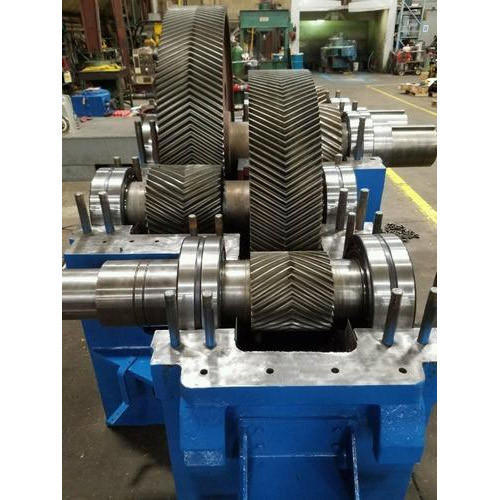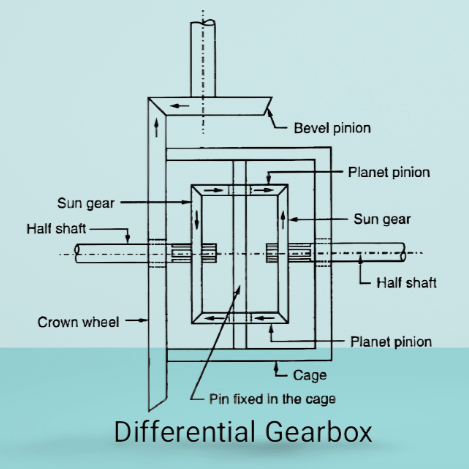Hello readers, today we’re diving into the world of Internal Combustion (IC) engines. We’ll break down the essential components and their functions. The IC engine, which operates on either the Otto or Diesel cycle, combusts fuel internally to produce thrust. This process converts chemical energy into mechanical energy, powering everything from cars to generators. Let’s get started.
Major Parts of an IC Engine and Their Functions
An IC engine consists of several crucial components. We’ll discuss each one and its role in the engine’s operation.
1. Cylinder Block
The cylinder block is a vital part of the IC engine where the piston reciprocates. Typically made of cast iron, it withstands pressures above 50-100 bar and temperatures up to 2600°C. Modern cylinder blocks are often made from materials like grey cast iron, compact graphite cast iron, nodular cast iron, and cast aluminum alloy.
Functions:
- Houses the piston during its movement.
- Withstands high pressure and temperature.
2. Cylinder Head
Fitted over the cylinder block, the cylinder head is made from the same materials and includes valves, spark plugs (for SI engines), or fuel injectors (for CI engines). A gasket ensures the head is airtight, preventing fuel leaks.
Functions:
- Seals the cylinder block.
- Mounts valves and spark plugs or injectors.
3. Piston
Made of aluminum alloy for efficient heat transfer, the piston converts reciprocating motion to rotary motion. It also transfers energy to the connecting rod after the power stroke.
Functions:
- Converts reciprocating motion to rotary motion.
- Transfers energy to the connecting rod.
4. Piston Rings
Piston rings, typically made of steel alloys, seal the combustion chamber. The top ring is the compression ring, while the bottom ring is the oil ring. The middle ring provides additional sealing.
Functions:
- Compression ring prevents gas leaks.
- Oil ring prevents oil leaks and scrapes excess oil.
- Middle ring offers extra sealing.
5. Gudgeon Pin
Also known as the piston pin or wrist pin, this component connects the piston to the connecting rod. It’s made of steel alloy to endure high strength and is manufactured through forging.
Functions:
- Connects the piston to the connecting rod.
6. Connecting Rod
The connecting rod transforms the reciprocating motion of the piston into the rotary motion of the crankshaft. Made from steel or aluminum alloys, it is crucial for engine performance.
Functions:
- Converts reciprocating motion to rotary motion.
7. Bearings (Small End and Big End)
These bearings facilitate smooth movement between the piston, connecting rod, and crankshaft, minimizing friction and power loss.
Functions:
- Ensure smooth motion.
- Reduce friction and power loss.
8. Crankshaft
This rotating component converts the piston’s reciprocating motion into rotary motion. Made of forged steel or cast iron, it connects all pistons through the connecting rods.
Functions:
- Converts reciprocating motion to rotary motion.
- Drives the flywheel and camshaft.
9. Camshaft
The camshaft opens and closes the engine’s valves at the correct times, based on the valve timing diagram. Its rotation is synchronized with the crankshaft.
Functions:
- Operates the valves at precise times.
10. Crankcase
The crankcase houses the crankshaft and, in some engines, stores lubricating oil. It’s made of cast iron and includes various structural elements to protect internal components.
Functions:
- Houses and protects the crankshaft.
- Stores lubricating oil in some engines.
11. Valves or Ports
Valves (in four-stroke engines) or ports (in two-stroke engines) manage the intake of fuel/air mixture and exhaust gases. Materials used include stainless steels and various alloys.
Functions:
- Control the intake and exhaust of gases.
- Seal the combustion chamber during compression.
12. Manifold
There are two types of manifolds: inlet and exhaust. The inlet manifold directs the fuel/air mixture into the engine, while the exhaust manifold channels burnt gases out.
Functions:
- Directs fuel/air mixture and exhaust gases.
13. Push Rod
The push rod, operated by the camshaft, opens and closes the engine’s valves.
Functions:
- Opens and closes valves.
14. Rocker Arm
This lever converts the camshaft’s radial movement into the linear movement needed to operate the valves. It’s made from materials like aluminum alloy, cast iron, or carbon steel.
Functions:
- Converts radial to linear motion for valve operation.
15. Spark Plug or Fuel Injector
Spark plugs are used in spark ignition (SI) engines to ignite the fuel mixture, while fuel injectors in compression ignition (CI) engines inject fuel into the combustion chamber.
Functions:
- Spark plug ignites fuel in SI engines.
- Fuel injector sprays fuel in CI engines.
16. Cooling Jackets or Fins
To manage the high temperatures inside the engine, cooling systems are essential. Small engines use air cooling, while larger engines typically use liquid cooling.
Functions:
- Reduce engine temperature.
- Prevent wear and tear.
17. Flywheel
The flywheel stores energy during the power stroke and releases it during the other strokes, ensuring smooth engine operation.
Functions:
- Stores and releases energy for smooth operation.
FAQs on IC Engines
What are the main parts of an internal combustion engine?
The main parts are the cylinder, cylinder head, piston, piston ring, gudgeon pin, connecting rod, bearings, crankshaft, camshaft, crankcase, valves or ports, manifold, push rod, rocker arm, spark plug or fuel injector, cooling jackets or fins, and flywheel.
What are examples of internal combustion engines?
Examples include engines in buses, trucks, motorcycles, and cars.
Is an IC engine a heat engine?
Yes, an IC engine is a type of heat engine.
That wraps up our detailed look at the parts of an IC engine and their functions. If you have any questions or thoughts, drop them in the comments. And don’t forget to share this article with your friends and on social media!


